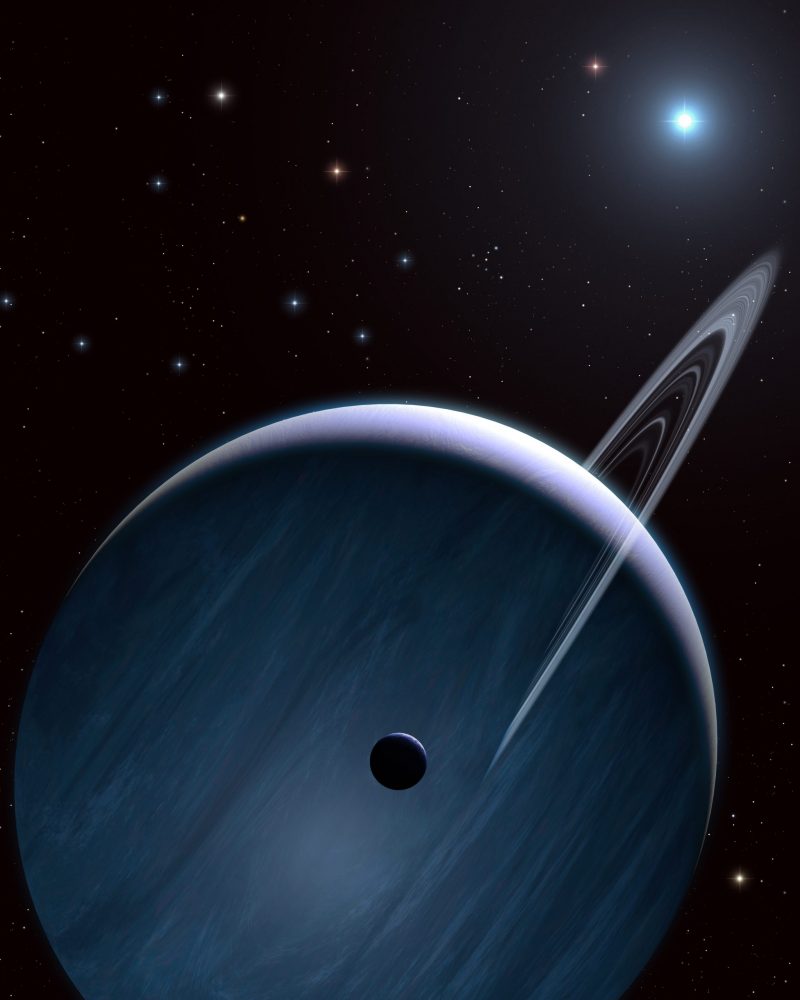
How do massive stars – which gush ultraviolet radiation that can limit planets’ growth – end up with planets as big as Jupiter? They steal them, said astronomers from the University of Sheffield. In an announcement on September 7, 2022, the researchers proposed that massive stars – more than three times the size of our sun – rip planets out of their stellar nurseries in what they’re calling a planetary heist.
The researchers published their findings in the peer-reviewed journal Monthly Notices of the Royal Astronomical Society on May 23, 2022. The paper is also available on arXiv.
Massive stars may steal BEASTies
On the positive side, it’s possible that planets can form around massive stars. However, the powerful radiation coming off them is a limiting factor for the growth of their planets. Yet, astronomers have found massive stars with Jupiter-size planets.
With this in mind, the astronomers at the University of Sheffield explained that the planets may originally have belonged to less massive stars in a stellar nursery or young star cluster. But the massive stars ripped the planets away from their original, parent star. Astronomers call these planets they’ve found BEASTies for the B-star Exoplanet Abundance STudy (BEAST).
These BEASTies orbit at a great distance from their current host star. The distance between the star and BEASTie can be hundreds of times the distance between Earth and the sun. Co-author Emma Daffern-Powell of the University of Sheffield said:
Our previous research has shown that in stellar nurseries stars can steal planets from other stars, or capture what we call ‘free-floating’ planets. We know that massive stars have more influence in these nurseries than sun-like stars. And we found that these massive stars can capture or steal planets, which we call ‘BEASTies’.
Essentially, this is a planetary heist. We used computer simulations to show that the theft or capture of these BEASTies occurs on average once in the first 10 million years of the evolution of a star-forming region.
Painting a picture of a planetary heist
Co-author Richard Parker of the University of Sheffield said:
The BEAST planets are a new addition to the myriad of exoplanetary systems, which display incredible diversity, from planetary systems around sun-like stars that are very different to our solar system, to planets orbiting evolved or dead stars.
The BEAST collaboration has discovered at least two super-Jovian planets orbiting massive stars. Whilst planets can form around massive stars, it is hard to envisage gas giant planets like Jupiter and Saturn being able to form in such hostile environments, where radiation from the stars can evaporate the planets before they fully form.
However, our simulations show that these planets can be captured or stolen, on orbits very similar to those observed for the BEASTies. Our results lend further credence to the idea that planets on more distant orbits (more than 100 times the distance from Earth to sun) may not be orbiting their parent star.
Bottom line: Massive stars expel powerful radiation that limits the growth of planets around them. But a new study shows they may steal Jupiter-size planets from stellar nurseries.
Source: The Great Planetary Heist: Theft and capture in star-forming regions











